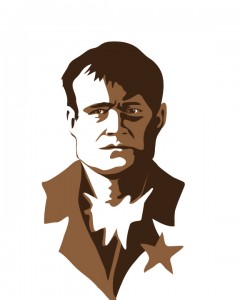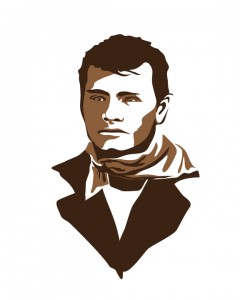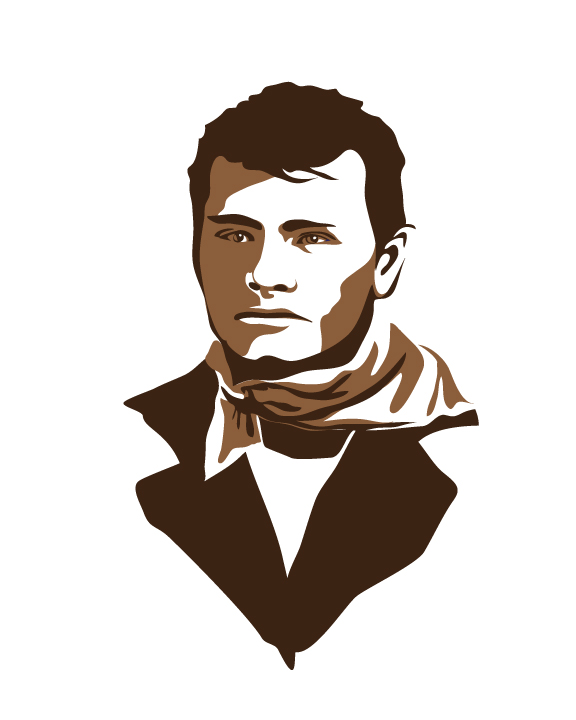 Utah has produced some of the Wild West’s most prominent figures, from distinguished religious leaders such as Brigham Young, who led a Mormon exodus to the Valley of the Great Salt Lake, to celebrated outlaws such as Butch Cassidy and the Sundance Kid. Long before statehood, Utah Territory was home to historic figures both famous and infamous.
Utah has produced some of the Wild West’s most prominent figures, from distinguished religious leaders such as Brigham Young, who led a Mormon exodus to the Valley of the Great Salt Lake, to celebrated outlaws such as Butch Cassidy and the Sundance Kid. Long before statehood, Utah Territory was home to historic figures both famous and infamous.

One of Utah’s genuine home-grown gunslingers was Matt Warner. Born in Ephraim on April 12, 1864 as Willard Erastus Christiansen, the young Mormon boy adopted the alias “Matt Warner” after a fight with another boy whom he thought he had killed. He was only 14-years-old. Fear of punishment forced the young fugitive to take refuge with a band of cattle rustlers. He won his first gunfight at the age of 15, marking the beginning of a life lived mostly outside the law, and later, in an ironic twist of fate, as a law man.
Roger Metzger is a member of E Clampus Vitus, Chapter 1900 (also known as the Helper Clampers); a group dedicated to the preservation of Utah’s outlaw past. Based in Helper, the Clampers commemorate local history with plaques dedicated to lesser-known historical persons and events.
According to Metzger, “We do plaques for ghost towns, coal mines, and people and places the state don’t recognize.” Matt Warner is one of Metzger’s favorites.
At the age of 25, Warner became a husband, father, and a temporarily honest man. But Warner soon resumed his nefarious ways and renewed his allegiance to the Robber’s Roost Gang. He plundered banks and robbed trains with the likes of “Elzy” Lay, Tom McCarty (his sister’s husband), outlaw pals Jim Peterson and Bill Tibbets, and the venerable Butch Cassidy himself. Warner’s Mormon upbringing earned him the sarcastic moniker, “The Mormon Kid.”
At the end of the 19th Century, the canyon country of southeastern Utah provided a vast labyrinth of hiding places where wanted men could escape the law. After a shootout gone bad, however, the law caught up with Warner and he was sentenced to five years’ hard time in the Utah Territorial Prison for robbery, during which time his wife passed away.
Good behavior earned Warner an early release from prison, and some say that in 1900, Governor Heber M. Wells granted him a pardon. In an unusual about-face, the once-notorious criminal remarried and ran for elected office in Carbon County. But his initial bid for public office met with failure, because according to Metzger, “He ran for Sheriff under his real name, Willard Erastus Christiansen, but nobody knew who he was.”
After officially changing his name to Matt Warner, he was easily elected Justice of the Peace and later served as the Sheriff of Price. A stone monument in front of the Carbon County Courthouse, placed there by the Clampers, bears his name today.
In his later years, Warner penned a memoir entitled The Last of the Bandit Riders. “He was a very brilliant outlaw,” says Metzger. “When he became Sheriff, he knew how to catch outlaws. He was one of the most excellent shots of his day. He was hired to guard gold coins and things.”
Known for a combustible temper in his younger days, Warner was considered a fair man by those who knew him, and it is said that “he would rather die than tell a lie.”
Matt Warner died on December 21, 1938. Shortly thereafter, in the Diamond Mountains, not far from Flaming Gorge, Matt Warner Reservoir was built and named in his honor.
On April 12th of this year, the Clampers celebrated Warner’s birthday, and every Christmas they sponsor a Sub-for-Santa in tribute to one of Utah’s outlaw legends.






